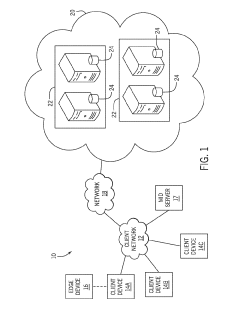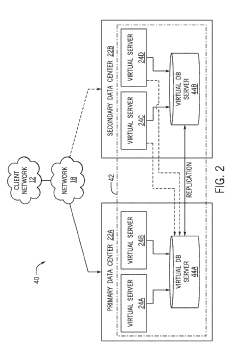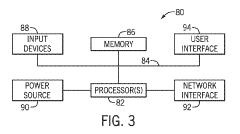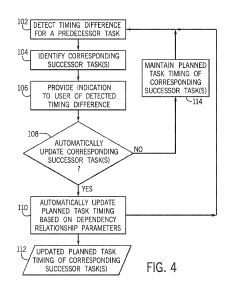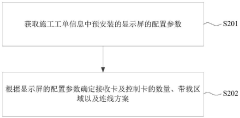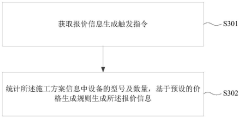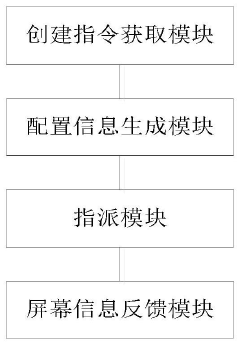How to Manage ULED Project Timelines Effectively?
JUN 20, 202510 MIN READ
Generate Your Research Report Instantly with AI Agent
Patsnap Eureka helps you evaluate technical feasibility & market potential.
ULED Project Background and Objectives
Ultra-Light Emitting Diode (ULED) technology represents a significant advancement in display and lighting systems, offering unprecedented energy efficiency and visual quality. The ULED project aims to revolutionize the industry by developing and implementing this cutting-edge technology across various applications. The primary objective is to create displays and lighting solutions that consume minimal power while delivering superior brightness and color accuracy.
The evolution of ULED technology builds upon the foundation of LED and OLED technologies, addressing their limitations and pushing the boundaries of what's possible in light emission. By utilizing novel materials and innovative manufacturing processes, ULED promises to overcome the efficiency barriers that have long challenged the industry. This project seeks to achieve a balance between power consumption, luminance, and color gamut that surpasses current market standards.
A key goal of the ULED project is to establish a robust timeline for research, development, and commercialization. This timeline must account for the complexities inherent in bringing a new technology to market, including material science advancements, manufacturing scalability, and integration with existing systems. Effective management of this timeline is crucial for maintaining a competitive edge in the fast-paced display and lighting industries.
The project also aims to address the growing demand for eco-friendly technologies. With increasing global emphasis on sustainability, ULED development is aligned with reducing electronic waste and minimizing the carbon footprint associated with display and lighting products. This environmental consideration adds another layer of complexity to the project timeline, as it necessitates careful selection of materials and processes that meet both performance and sustainability criteria.
Furthermore, the ULED project seeks to explore and define new application areas beyond traditional displays and lighting. This includes potential uses in automotive, healthcare, and smart home technologies, each with its own set of technical requirements and market dynamics. Expanding into these diverse sectors requires a flexible yet structured approach to project management, ensuring that timelines can adapt to the specific needs of each application while maintaining overall progress.
Collaboration with industry partners, academic institutions, and regulatory bodies is another critical aspect of the ULED project. These partnerships are essential for accelerating research, sharing knowledge, and ensuring compliance with emerging standards. Managing these relationships and aligning their contributions with the project timeline presents a significant challenge that must be addressed for successful implementation of ULED technology.
In summary, the ULED project background encompasses a broad spectrum of technological, environmental, and market-driven objectives. The effective management of project timelines is paramount to navigating the complex landscape of innovation, regulation, and commercialization. By setting clear milestones, anticipating challenges, and maintaining flexibility, the project aims to bring ULED technology from concept to reality, potentially transforming multiple industries in the process.
The evolution of ULED technology builds upon the foundation of LED and OLED technologies, addressing their limitations and pushing the boundaries of what's possible in light emission. By utilizing novel materials and innovative manufacturing processes, ULED promises to overcome the efficiency barriers that have long challenged the industry. This project seeks to achieve a balance between power consumption, luminance, and color gamut that surpasses current market standards.
A key goal of the ULED project is to establish a robust timeline for research, development, and commercialization. This timeline must account for the complexities inherent in bringing a new technology to market, including material science advancements, manufacturing scalability, and integration with existing systems. Effective management of this timeline is crucial for maintaining a competitive edge in the fast-paced display and lighting industries.
The project also aims to address the growing demand for eco-friendly technologies. With increasing global emphasis on sustainability, ULED development is aligned with reducing electronic waste and minimizing the carbon footprint associated with display and lighting products. This environmental consideration adds another layer of complexity to the project timeline, as it necessitates careful selection of materials and processes that meet both performance and sustainability criteria.
Furthermore, the ULED project seeks to explore and define new application areas beyond traditional displays and lighting. This includes potential uses in automotive, healthcare, and smart home technologies, each with its own set of technical requirements and market dynamics. Expanding into these diverse sectors requires a flexible yet structured approach to project management, ensuring that timelines can adapt to the specific needs of each application while maintaining overall progress.
Collaboration with industry partners, academic institutions, and regulatory bodies is another critical aspect of the ULED project. These partnerships are essential for accelerating research, sharing knowledge, and ensuring compliance with emerging standards. Managing these relationships and aligning their contributions with the project timeline presents a significant challenge that must be addressed for successful implementation of ULED technology.
In summary, the ULED project background encompasses a broad spectrum of technological, environmental, and market-driven objectives. The effective management of project timelines is paramount to navigating the complex landscape of innovation, regulation, and commercialization. By setting clear milestones, anticipating challenges, and maintaining flexibility, the project aims to bring ULED technology from concept to reality, potentially transforming multiple industries in the process.
Market Analysis for ULED Technology
The ULED (Ultra Light Emitting Diode) technology market is experiencing rapid growth and transformation, driven by increasing demand for high-quality display solutions across various industries. As consumers and businesses alike seek more immersive and energy-efficient visual experiences, ULED technology has emerged as a promising solution, offering superior brightness, contrast, and color accuracy compared to traditional LED displays.
The global ULED market is primarily segmented into consumer electronics, automotive, and commercial applications. In the consumer electronics sector, ULED technology is gaining traction in high-end televisions, smartphones, and tablets, where image quality is a key differentiator. The automotive industry is also embracing ULED for advanced infotainment systems and digital dashboards, enhancing the overall driving experience.
Market research indicates that the ULED technology market is expected to grow significantly over the next five years. This growth is attributed to several factors, including the increasing adoption of 4K and 8K resolution displays, the rising demand for energy-efficient lighting solutions, and the expanding application of ULED in emerging technologies such as augmented reality (AR) and virtual reality (VR).
The Asia-Pacific region, particularly China, South Korea, and Japan, is leading the ULED market in terms of production and consumption. These countries house major display manufacturers and have a strong consumer base for high-end electronic devices. North America and Europe are also significant markets, driven by the adoption of ULED technology in premium consumer electronics and automotive applications.
Key market trends shaping the ULED industry include the miniaturization of LED chips, improvements in manufacturing processes to reduce costs, and the integration of ULED with other advanced technologies such as quantum dots and micro-LED. These advancements are expected to further enhance the performance and competitiveness of ULED displays in the coming years.
However, the ULED market also faces challenges. The high production costs associated with ULED technology currently limit its widespread adoption, particularly in mid-range consumer products. Additionally, the ongoing global semiconductor shortage has impacted the supply chain, potentially affecting the production and availability of ULED displays.
Despite these challenges, the overall market outlook for ULED technology remains positive. As manufacturing processes improve and economies of scale are achieved, the cost of ULED displays is expected to decrease, making them more accessible to a broader range of consumers and industries. This, coupled with the technology's superior performance characteristics, positions ULED as a key player in the future of display technology.
The global ULED market is primarily segmented into consumer electronics, automotive, and commercial applications. In the consumer electronics sector, ULED technology is gaining traction in high-end televisions, smartphones, and tablets, where image quality is a key differentiator. The automotive industry is also embracing ULED for advanced infotainment systems and digital dashboards, enhancing the overall driving experience.
Market research indicates that the ULED technology market is expected to grow significantly over the next five years. This growth is attributed to several factors, including the increasing adoption of 4K and 8K resolution displays, the rising demand for energy-efficient lighting solutions, and the expanding application of ULED in emerging technologies such as augmented reality (AR) and virtual reality (VR).
The Asia-Pacific region, particularly China, South Korea, and Japan, is leading the ULED market in terms of production and consumption. These countries house major display manufacturers and have a strong consumer base for high-end electronic devices. North America and Europe are also significant markets, driven by the adoption of ULED technology in premium consumer electronics and automotive applications.
Key market trends shaping the ULED industry include the miniaturization of LED chips, improvements in manufacturing processes to reduce costs, and the integration of ULED with other advanced technologies such as quantum dots and micro-LED. These advancements are expected to further enhance the performance and competitiveness of ULED displays in the coming years.
However, the ULED market also faces challenges. The high production costs associated with ULED technology currently limit its widespread adoption, particularly in mid-range consumer products. Additionally, the ongoing global semiconductor shortage has impacted the supply chain, potentially affecting the production and availability of ULED displays.
Despite these challenges, the overall market outlook for ULED technology remains positive. As manufacturing processes improve and economies of scale are achieved, the cost of ULED displays is expected to decrease, making them more accessible to a broader range of consumers and industries. This, coupled with the technology's superior performance characteristics, positions ULED as a key player in the future of display technology.
Current Challenges in ULED Project Management
ULED (Ultra-Light Emitting Diode) project management faces several significant challenges in the current technological landscape. One of the primary issues is the complexity of coordinating multiple interdisciplinary teams. ULED projects often involve collaboration between optical engineers, material scientists, electrical engineers, and manufacturing specialists. Ensuring effective communication and synchronization among these diverse groups can be particularly challenging, leading to potential delays and misalignments in project timelines.
Another major hurdle is the rapid pace of technological advancements in the ULED field. As new breakthroughs occur frequently, project managers must constantly reassess and potentially adjust their timelines to incorporate cutting-edge developments. This dynamic environment makes it difficult to establish and maintain long-term project schedules, as what seems feasible today may become obsolete within months.
The supply chain complexities associated with ULED projects also pose significant challenges. Many components and materials required for ULED manufacturing are highly specialized and may have limited suppliers. Disruptions in the supply chain, whether due to global events, material shortages, or supplier issues, can severely impact project timelines. Project managers must navigate these uncertainties while trying to maintain consistent progress.
Quality control and testing phases in ULED projects are often more time-consuming than anticipated. The stringent performance requirements for ULED devices, including factors like brightness, color accuracy, and energy efficiency, necessitate extensive testing and refinement cycles. These iterative processes can lead to unexpected delays, especially when unforeseen issues arise during late-stage development.
Resource allocation presents another significant challenge. ULED projects often require specialized equipment and facilities, which may be in high demand across multiple projects or departments. Balancing these limited resources across various project stages and ensuring their availability at critical junctures can be a complex task for project managers.
Regulatory compliance and certification processes add another layer of complexity to ULED project timelines. As ULED technology often pushes the boundaries of existing standards, navigating the regulatory landscape can be time-consuming and unpredictable. Delays in obtaining necessary approvals or certifications can significantly impact overall project timelines.
Lastly, the pressure to meet market demands and stay ahead of competitors often leads to ambitious project timelines. This can result in unrealistic expectations and increased stress on project teams, potentially compromising the quality of the final product or leading to burnout among team members. Striking the right balance between speed to market and product excellence remains a persistent challenge in ULED project management.
Another major hurdle is the rapid pace of technological advancements in the ULED field. As new breakthroughs occur frequently, project managers must constantly reassess and potentially adjust their timelines to incorporate cutting-edge developments. This dynamic environment makes it difficult to establish and maintain long-term project schedules, as what seems feasible today may become obsolete within months.
The supply chain complexities associated with ULED projects also pose significant challenges. Many components and materials required for ULED manufacturing are highly specialized and may have limited suppliers. Disruptions in the supply chain, whether due to global events, material shortages, or supplier issues, can severely impact project timelines. Project managers must navigate these uncertainties while trying to maintain consistent progress.
Quality control and testing phases in ULED projects are often more time-consuming than anticipated. The stringent performance requirements for ULED devices, including factors like brightness, color accuracy, and energy efficiency, necessitate extensive testing and refinement cycles. These iterative processes can lead to unexpected delays, especially when unforeseen issues arise during late-stage development.
Resource allocation presents another significant challenge. ULED projects often require specialized equipment and facilities, which may be in high demand across multiple projects or departments. Balancing these limited resources across various project stages and ensuring their availability at critical junctures can be a complex task for project managers.
Regulatory compliance and certification processes add another layer of complexity to ULED project timelines. As ULED technology often pushes the boundaries of existing standards, navigating the regulatory landscape can be time-consuming and unpredictable. Delays in obtaining necessary approvals or certifications can significantly impact overall project timelines.
Lastly, the pressure to meet market demands and stay ahead of competitors often leads to ambitious project timelines. This can result in unrealistic expectations and increased stress on project teams, potentially compromising the quality of the final product or leading to burnout among team members. Striking the right balance between speed to market and product excellence remains a persistent challenge in ULED project management.
Effective ULED Timeline Management Strategies
01 Project timeline visualization and management
Systems and methods for visualizing and managing project timelines, including interactive Gantt charts and timeline interfaces. These tools allow for easy tracking of tasks, milestones, and dependencies, enabling efficient project planning and execution.- Project timeline visualization and management: Systems and methods for visualizing and managing project timelines, including interactive Gantt charts and timeline views. These tools allow for easy tracking of tasks, milestones, and dependencies, enabling efficient project planning and execution.
- Collaborative project management platforms: Online platforms that facilitate collaboration among team members for project timeline management. These systems allow real-time updates, task assignments, and progress tracking, improving communication and coordination within project teams.
- AI-powered project timeline optimization: Artificial intelligence and machine learning techniques applied to project timeline management. These systems can analyze historical data, predict potential delays, and suggest optimizations to improve project efficiency and resource allocation.
- Integration of project timelines with other business systems: Methods for integrating project timeline management with other enterprise systems such as resource management, financial planning, and customer relationship management. This integration provides a holistic view of project impacts across the organization.
- Mobile and cloud-based project timeline tools: Mobile applications and cloud-based solutions for accessing and managing project timelines on-the-go. These tools enable real-time updates and collaboration from various devices, improving flexibility and responsiveness in project management.
02 Collaborative project management platforms
Online platforms that facilitate collaboration among team members for project timeline management. These systems allow multiple users to access, update, and share project information in real-time, improving communication and coordination throughout the project lifecycle.Expand Specific Solutions03 AI-powered project timeline optimization
Artificial intelligence and machine learning techniques applied to project timeline management. These advanced algorithms analyze historical data and project parameters to optimize schedules, predict potential delays, and suggest improvements for more efficient project execution.Expand Specific Solutions04 Integration of project timelines with multimedia content
Systems that incorporate multimedia elements such as video, audio, and images into project timeline management. This integration enhances the presentation and understanding of project progress, milestones, and deliverables.Expand Specific Solutions05 Mobile-friendly project timeline management
Applications and systems designed for managing project timelines on mobile devices. These solutions provide on-the-go access to project information, allowing team members to update and monitor timelines from anywhere, enhancing flexibility and responsiveness in project management.Expand Specific Solutions
Key Stakeholders in ULED Industry
The ULED project timeline management landscape is in a mature phase, with a substantial market size driven by the growing demand for efficient project management in the telecommunications and electronics sectors. Industry leaders like Ericsson, Samsung, Huawei, and Apple have developed sophisticated timeline management systems, integrating advanced technologies such as AI and machine learning. These companies, along with others like Qualcomm and Nokia, have significantly contributed to the high technical maturity of ULED project management tools. The competitive landscape is characterized by continuous innovation, with companies like ServiceNow and Procore Technologies offering specialized solutions that cater to the unique needs of ULED projects, emphasizing real-time collaboration, risk assessment, and resource optimization.
Raytheon Co.
Technical Solution: Raytheon has developed an advanced Project Management Information System (PMIS) specifically tailored for ULED projects. This system integrates real-time data analytics, predictive modeling, and collaborative tools to effectively manage project timelines. It utilizes artificial intelligence to identify potential bottlenecks and suggests optimal resource allocation. The PMIS also incorporates a risk management module that continuously assesses and mitigates potential delays.
Strengths: Highly customized for ULED projects, AI-driven insights, real-time analytics. Weaknesses: May require significant training for team members, potential high implementation costs.
Procore Technologies, Inc.
Technical Solution: Procore offers a cloud-based construction management software platform that can be adapted for ULED project timeline management. Their solution provides a centralized hub for all project information, including schedules, budgets, and communications. It features advanced scheduling tools with Gantt charts, critical path analysis, and resource leveling capabilities. Procore's platform also offers mobile accessibility, allowing team members to update project status and timelines from anywhere, ensuring real-time project visibility.
Strengths: User-friendly interface, comprehensive project overview, mobile accessibility. Weaknesses: May require customization for specific ULED project needs, potential scalability issues for very large projects.
Innovative Approaches to ULED Project Scheduling
System and method for a control based project scheduling mode
PatentActiveUS20190340565A1
Innovation
- A semi-automated project scheduling mode in a cloud-based planning console that allows users to manage project tasks based on dependency relationships, enabling manual updates of successor tasks' timing through user-selectable interaction points, thereby maintaining control over project timelines.
LED display screen project management method and system
PatentPendingCN118171828A
Innovation
- Provides an LED display project management method and system that obtains construction work order creation instructions, generates construction plan configuration information, pushes it to the assigned account, and obtains LED display and control system information to achieve electronic management of the entire process and real-time monitor.
Risk Assessment in ULED Projects
Risk assessment is a critical component in the effective management of ULED (Ultra-Light Emitting Diode) project timelines. The complex nature of ULED technology and its rapid evolution necessitate a comprehensive approach to identifying and mitigating potential risks that could impact project schedules.
One of the primary risks in ULED projects is the volatility of the supply chain. The specialized materials required for ULED production, such as rare earth elements and advanced semiconductor compounds, are often subject to market fluctuations and geopolitical tensions. These factors can lead to unexpected delays in material procurement, potentially derailing project timelines. To mitigate this risk, project managers should implement robust supply chain diversification strategies and maintain buffer stocks of critical components.
Technical challenges pose another significant risk to ULED project timelines. The cutting-edge nature of ULED technology means that unforeseen technical hurdles may arise during the development process. These could include issues with color accuracy, luminous efficacy, or thermal management. To address this risk, it is essential to allocate sufficient time and resources for research and development phases, and to establish clear technical milestones with built-in contingencies.
Regulatory compliance represents a third major risk area. As ULED technology advances, regulatory frameworks may struggle to keep pace, leading to uncertainty in certification processes. This can result in unexpected delays if new standards are introduced mid-project. To mitigate this risk, project teams should maintain close relationships with regulatory bodies and industry associations to stay informed of potential changes in standards and certification requirements.
Market dynamics also play a crucial role in ULED project risk assessment. Rapid technological advancements in competing lighting technologies, such as micro-LED or advanced OLED, could potentially shift market demand during the project lifecycle. This risk can be managed by incorporating flexibility into project plans and maintaining a keen awareness of market trends through regular competitive analysis and customer feedback loops.
Lastly, human resource risks should not be overlooked. The specialized nature of ULED technology requires a highly skilled workforce. Talent shortages or unexpected departures of key personnel can significantly impact project timelines. To mitigate this risk, organizations should invest in comprehensive training programs, implement knowledge transfer protocols, and develop robust succession planning strategies.
By thoroughly assessing these risks and implementing appropriate mitigation strategies, project managers can significantly enhance their ability to manage ULED project timelines effectively. Regular risk reviews and adaptive management practices will ensure that projects remain on track despite the dynamic and challenging nature of ULED technology development.
One of the primary risks in ULED projects is the volatility of the supply chain. The specialized materials required for ULED production, such as rare earth elements and advanced semiconductor compounds, are often subject to market fluctuations and geopolitical tensions. These factors can lead to unexpected delays in material procurement, potentially derailing project timelines. To mitigate this risk, project managers should implement robust supply chain diversification strategies and maintain buffer stocks of critical components.
Technical challenges pose another significant risk to ULED project timelines. The cutting-edge nature of ULED technology means that unforeseen technical hurdles may arise during the development process. These could include issues with color accuracy, luminous efficacy, or thermal management. To address this risk, it is essential to allocate sufficient time and resources for research and development phases, and to establish clear technical milestones with built-in contingencies.
Regulatory compliance represents a third major risk area. As ULED technology advances, regulatory frameworks may struggle to keep pace, leading to uncertainty in certification processes. This can result in unexpected delays if new standards are introduced mid-project. To mitigate this risk, project teams should maintain close relationships with regulatory bodies and industry associations to stay informed of potential changes in standards and certification requirements.
Market dynamics also play a crucial role in ULED project risk assessment. Rapid technological advancements in competing lighting technologies, such as micro-LED or advanced OLED, could potentially shift market demand during the project lifecycle. This risk can be managed by incorporating flexibility into project plans and maintaining a keen awareness of market trends through regular competitive analysis and customer feedback loops.
Lastly, human resource risks should not be overlooked. The specialized nature of ULED technology requires a highly skilled workforce. Talent shortages or unexpected departures of key personnel can significantly impact project timelines. To mitigate this risk, organizations should invest in comprehensive training programs, implement knowledge transfer protocols, and develop robust succession planning strategies.
By thoroughly assessing these risks and implementing appropriate mitigation strategies, project managers can significantly enhance their ability to manage ULED project timelines effectively. Regular risk reviews and adaptive management practices will ensure that projects remain on track despite the dynamic and challenging nature of ULED technology development.
Resource Optimization for ULED Development
Effective resource optimization is crucial for the successful development of ULED (Ultra-Light Emitting Diode) projects. To manage ULED project timelines effectively, it is essential to focus on optimizing the allocation and utilization of resources throughout the development process.
One key aspect of resource optimization is the efficient allocation of human resources. ULED projects typically require a diverse team of experts, including optical engineers, materials scientists, and manufacturing specialists. By carefully assigning tasks based on individual strengths and expertise, project managers can ensure that each team member contributes optimally to the project's progress. Implementing a matrix organizational structure can facilitate cross-functional collaboration and knowledge sharing, leading to more efficient problem-solving and reduced development time.
Financial resource management is another critical factor in ULED development. Allocating budgets strategically across different project phases can help prevent bottlenecks and ensure smooth progress. Investing in advanced simulation and modeling tools during the early stages can significantly reduce the need for costly physical prototypes later in the development cycle. Additionally, implementing a stage-gate process for budget allocation can help maintain financial control and allow for timely adjustments based on project milestones and performance metrics.
Optimizing equipment and facilities usage is essential for maintaining project timelines. ULED development often requires specialized equipment for tasks such as epitaxial growth, lithography, and testing. Implementing a centralized scheduling system for shared resources can minimize downtime and conflicts between different project teams. Furthermore, considering the option of outsourcing certain specialized processes to external partners can help overcome equipment limitations and accelerate development timelines.
Supply chain optimization plays a crucial role in ULED project management. Establishing strong relationships with key suppliers and implementing just-in-time inventory management can reduce lead times and minimize the risk of material shortages. Conducting regular supplier audits and maintaining alternative sourcing options can help mitigate potential disruptions to the project timeline.
Leveraging advanced project management tools and methodologies can significantly enhance resource optimization efforts. Implementing Agile project management techniques, such as Scrum or Kanban, can improve team productivity and adaptability to changing project requirements. Utilizing project management software with resource allocation features can provide real-time visibility into resource utilization and help identify potential bottlenecks before they impact the project timeline.
Continuous improvement and knowledge management are essential for long-term resource optimization in ULED development. Establishing a system for capturing and sharing lessons learned from previous projects can help future teams avoid common pitfalls and streamline their development processes. Regular training and skill development programs for team members can enhance their capabilities and improve overall project efficiency.
One key aspect of resource optimization is the efficient allocation of human resources. ULED projects typically require a diverse team of experts, including optical engineers, materials scientists, and manufacturing specialists. By carefully assigning tasks based on individual strengths and expertise, project managers can ensure that each team member contributes optimally to the project's progress. Implementing a matrix organizational structure can facilitate cross-functional collaboration and knowledge sharing, leading to more efficient problem-solving and reduced development time.
Financial resource management is another critical factor in ULED development. Allocating budgets strategically across different project phases can help prevent bottlenecks and ensure smooth progress. Investing in advanced simulation and modeling tools during the early stages can significantly reduce the need for costly physical prototypes later in the development cycle. Additionally, implementing a stage-gate process for budget allocation can help maintain financial control and allow for timely adjustments based on project milestones and performance metrics.
Optimizing equipment and facilities usage is essential for maintaining project timelines. ULED development often requires specialized equipment for tasks such as epitaxial growth, lithography, and testing. Implementing a centralized scheduling system for shared resources can minimize downtime and conflicts between different project teams. Furthermore, considering the option of outsourcing certain specialized processes to external partners can help overcome equipment limitations and accelerate development timelines.
Supply chain optimization plays a crucial role in ULED project management. Establishing strong relationships with key suppliers and implementing just-in-time inventory management can reduce lead times and minimize the risk of material shortages. Conducting regular supplier audits and maintaining alternative sourcing options can help mitigate potential disruptions to the project timeline.
Leveraging advanced project management tools and methodologies can significantly enhance resource optimization efforts. Implementing Agile project management techniques, such as Scrum or Kanban, can improve team productivity and adaptability to changing project requirements. Utilizing project management software with resource allocation features can provide real-time visibility into resource utilization and help identify potential bottlenecks before they impact the project timeline.
Continuous improvement and knowledge management are essential for long-term resource optimization in ULED development. Establishing a system for capturing and sharing lessons learned from previous projects can help future teams avoid common pitfalls and streamline their development processes. Regular training and skill development programs for team members can enhance their capabilities and improve overall project efficiency.
Unlock deeper insights with Patsnap Eureka Quick Research — get a full tech report to explore trends and direct your research. Try now!
Generate Your Research Report Instantly with AI Agent
Supercharge your innovation with Patsnap Eureka AI Agent Platform!
